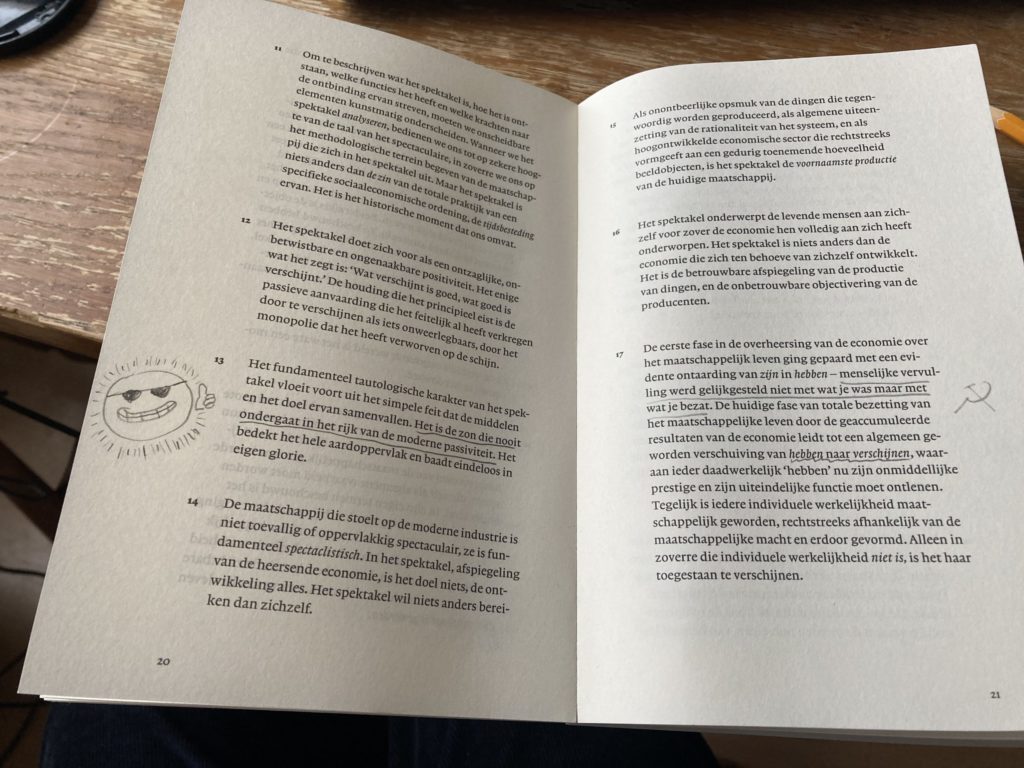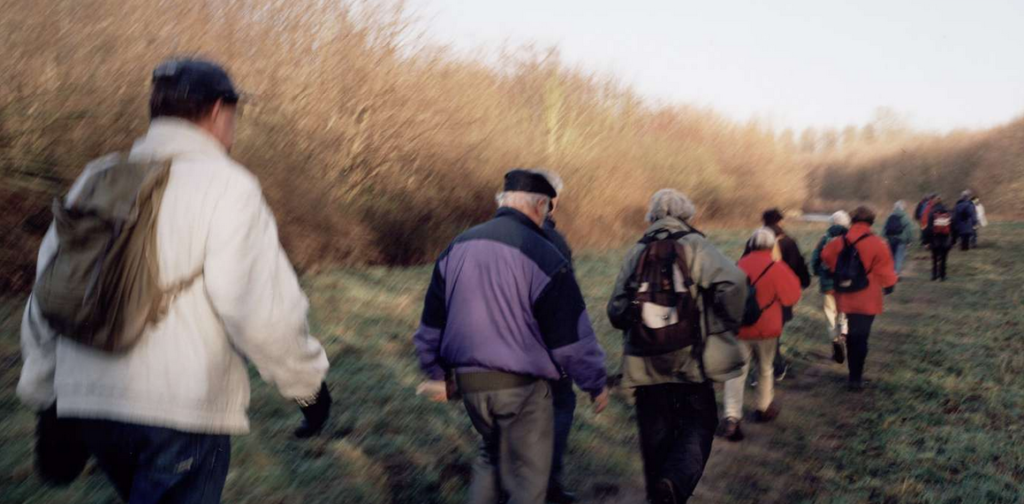Last Updated on 17/08/2022
Background
I always appreciated the thoughts of the Situationist International, especially the works from Guy Debord. I still have a Dutch version of La société du spectacle with some written notes on the first pages before I got overwhelmed. Debord loves to write in depressing aphorisms. I like to think I got the message behind these theses. Take a look at the original text if you ever have the energy.

I rather focus now on how you might still force yourself to have some traces of “authentic life”. Or, as he writes:
a sense of self-consciousness of existence within a particular environment or ambience”
One of these methods is the strategy of dérive. This is part of psychogeography. Once again, you can read about it if you have the energy. I would summarise this tactic and theory as breaking your habits of travelling in your own city.
When you travel, you usually have a point A to point B. I cycle the same route to work every day. It is the most efficient and I don’t want to waste time. (That I often leave too late from home is another story.)
Ever since the Covid lockdown a lot of people have discovered the joy of walking again. But we often take a similar route. A familiar walk through our neighbourhood, or a walk through the local park. I read an interview with a man that “rates” the best walks, and his site has 150.000 visitors a month. Ecologists warn that local fauna has been disturbed because of all the daily visitors.

A dérive has a different approach. You just drift. You larp as a flâneur. A stroller of the streets. You might even call it a very relaxing method of parkour.
Still, how do you truly make an unplanned journey? I still have a certain preference for a direction or area I would like to see. That’s why I chose to let a random calculation guide me. Or, as Max Alyokhin describes in one of these applications – transfer your subjectivity to a program.
I decided to use the app Randonautica. I dislike how this app has commodified the avant-garde ideas of Debord, so I will not write much about this app. It is stupid that it wants you to grab your wallet if you want to use it a lot. But it does one thing well: picking a truly random but still interesting location you can walk to. I might try other apps that respect the ideas of dérive in the future.
My approach
- Wait for a state of mind that I would like to go on a walk.
- Nice weather is preferable, of course.
- Have enough time – so there is no need to rush.
- I prefer being alone.
- Generate a random spot in my city with an app.
- Prepare my walk:
- Write down the location.
- Get a vague orientation how to walk to this location.
- Take minimum distraction with you.
- No music!
- A simple notebook with pencil.
- Something you can take pictures with.
- Walk to the spot and walk back.
- I trust my guts for directions.
- If there is an interesting detour, take it. Or not.
- Make notes if you want to remember something.
- I like to write down art pieces so I can research it later.
- Or an interesting thought or observation about your surroundings.
- Specific street names too.
- Only look at your phone if you are truly lost (except if you want to take a picture).
- Don’t forget you don’t have just eyes and also other senses – sometimes you can hear or smell interesting situations!
- Technical support: I use Citystrides and Strava to map my walk to look at it afterwards. MapOut is a beautiful app without any ads that feels and works like a physical map (iOS only so far).
If I have new insights, I will add them to the list.
Have a happy dérive!